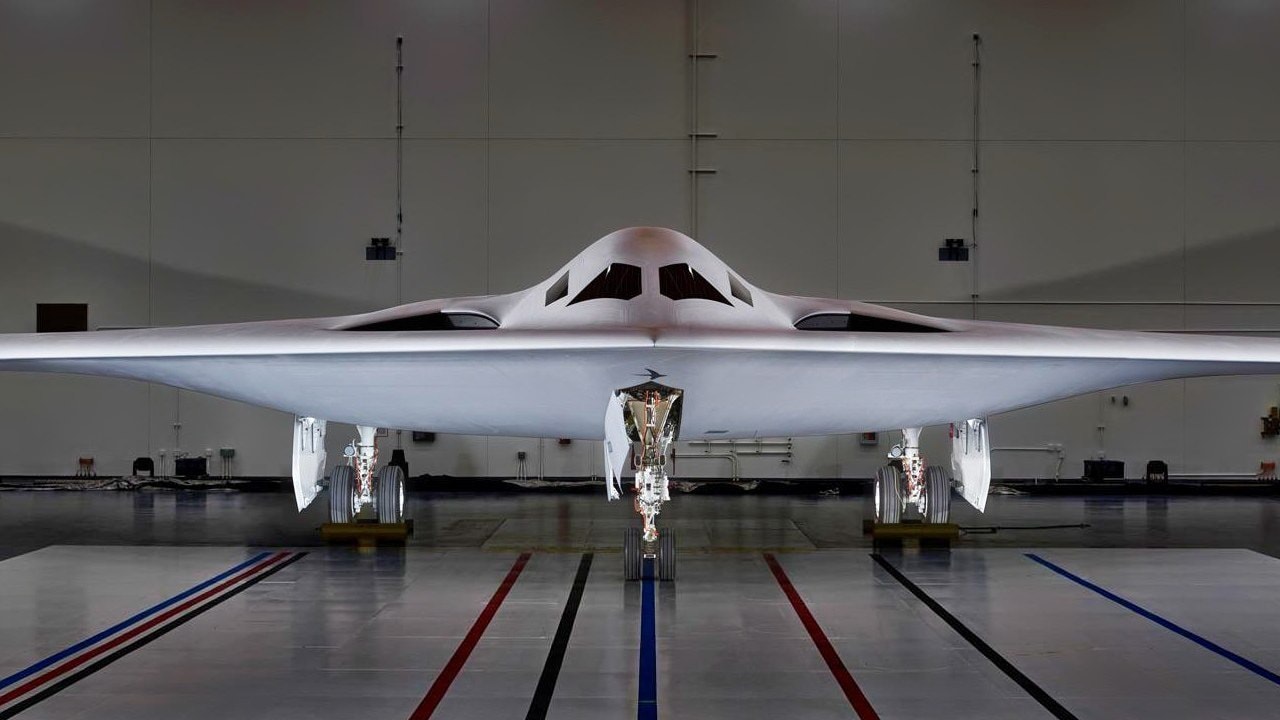The B-21 Raider will be one of the stealthiest airplanes in U.S. history. The Air Force has ordered 100 of these bombers at a total cost of the program of $203 billion—but that number may need to go up.
A fleet of B-21s would serve the United States well as potential conflicts with great powers such as China and Russia loom. However, the United States may need 200 to 250 of the B-21s.
War Is Coming, And It Probably Isn’t Going To Be “Cold”
China’s expressions of intent to take Taiwan are more than mere saber-rattling. They’ve made their views clear on Taiwan, and on their designs on the South China Sea—they claim nearly all of it.
The unfortunate truth is that if war breaks out between the U.S. and China, it would be no great shock if the Russians joined in, too. Russia and China have long tried to weaken the U.S. on the world stage. Russia is in no shape to engage the United States in a conventional conflict. Their failures in Ukraine have been costly in terms of personnel, arms, and equipment. All of this is well documented.
However, Russia will attempt to take advantage of a war between China and the U.S. to reacquire some of the Baltic states that were once part of the Soviet Union. Meanwhile, China has been on a major rebuilding swing of its armed forces, and it may calculate that a stretched-thin U.S. won’t be able to stop its Navy from owning the Indo-Pacific seas.
Even 100 B-21 stealth bombers won’t be enough if both countries move to fulfill their ambitions at once.
U.S. Rethinking Its B-21 Acquisition of 100
Northrop Grumman CEO Kathy Warden recently said she believed that the possibility of expanded orders was “exactly what the Air Force is looking at,” with Secretary of the Air Force Frank Kendall having “been open about looking at the various options they have for increasing their force size, and [he] has talked specifically about NGAD, and we know that B-21 is in the mix, as well.”
The future of America’s NGAD (Next Generation Air Dominance) sixth-generation fighter program is highly uncertain, due to its tremendous projected costs. Analysts have repeatedly raised the possibility that the funds saved if the program were cut could facilitate more substantial acquisitions of B-21s.
Thus, the B-21 is set to be the first intercontinental-range stealth bomber to be widely fielded. Its development comes at a time when China is developing its own comparable aircraft under the H-20 program.
Even 200 B-21s Might Not Be Enough
The Mitchell Institute think tank has published a paper strongly advising the U.S. Air Force not to cut costs on its B-21 stealth bomber program.
The report, authored by former U.S. bomber pilot Mark Gunzinger, stressed that the U.S. would need to neutralize a large number of targets deep in the interiors of Chinese and Russian airspace in the event of war.
He said the bomber would provide the most reliable means of doing that and was more cost-effective and dependable than relying on standoff strikes using cruise missiles. Gunzinger believes the Air Force needs at least 225 B-21 Raiders to take on China and Russia in a potential conflict.
Maintaining The Nuclear Triad
Maintaining the nuclear triad is as crucial as ever, and the Air Force can deliver on the need with 225 B-21s, Gunzinger said in his report detailing the Chinese threat.
“The Air Force’s penetrating bombers exist to provide weapons and sensor density at range that enable theater commanders to achieve a wide spectrum of effects against the most difficult target sets,” he wrote.
“More Air Force long-range, penetrating strike capacity is now required to defeat Chinese aggression in the Indo-Pacific and meet other force sizing requirements. To a significant extent, the need for more long-range penetrating strike capacity is driven by theater commander requirements to counter China’s operational advantages in a conflict that occurs along its periphery.”
Gen. Thomas A. Bussiere, the commander of the Air Force Global Strike Command, testified before Congress that a fleet of 220 bombers would likely be needed to meet the Air Force’s requirements. Taking into account the current plan to retain 75 upgraded B-52Js, that would require a fleet of at least 145 B-21s.
“It’s a force mix discussion within the Department of the Air Force, and it’s a resource and priority question within the Department of Defense and the nation,” Bussiere added.
Another think tank, the Center for Strategic and Budgetary Assessments, conducted a study that called for the acquisition of 288 B-21 bombers and the retention of the entire B-52H fleet.
The high cost makes this a challenge to achieve, but the Air Force needs between 200 and 250 B-21 Raider stealth bombers to win in a potential war with China. I recently wrote about refueling tankers for the B-21; more of those aircraft will be needed as well.
About the Author: Steve Balestrieri
Steve Balestrieri is a 19FortyFive National Security Columnist. He served as a US Army Special Forces NCO and Warrant Officer. In addition to writing for 19FortyFive, he covers the NFL for PatsFans.com and is a member of the Pro Football Writers of America (PFWA). His work was regularly featured in many military publications.

